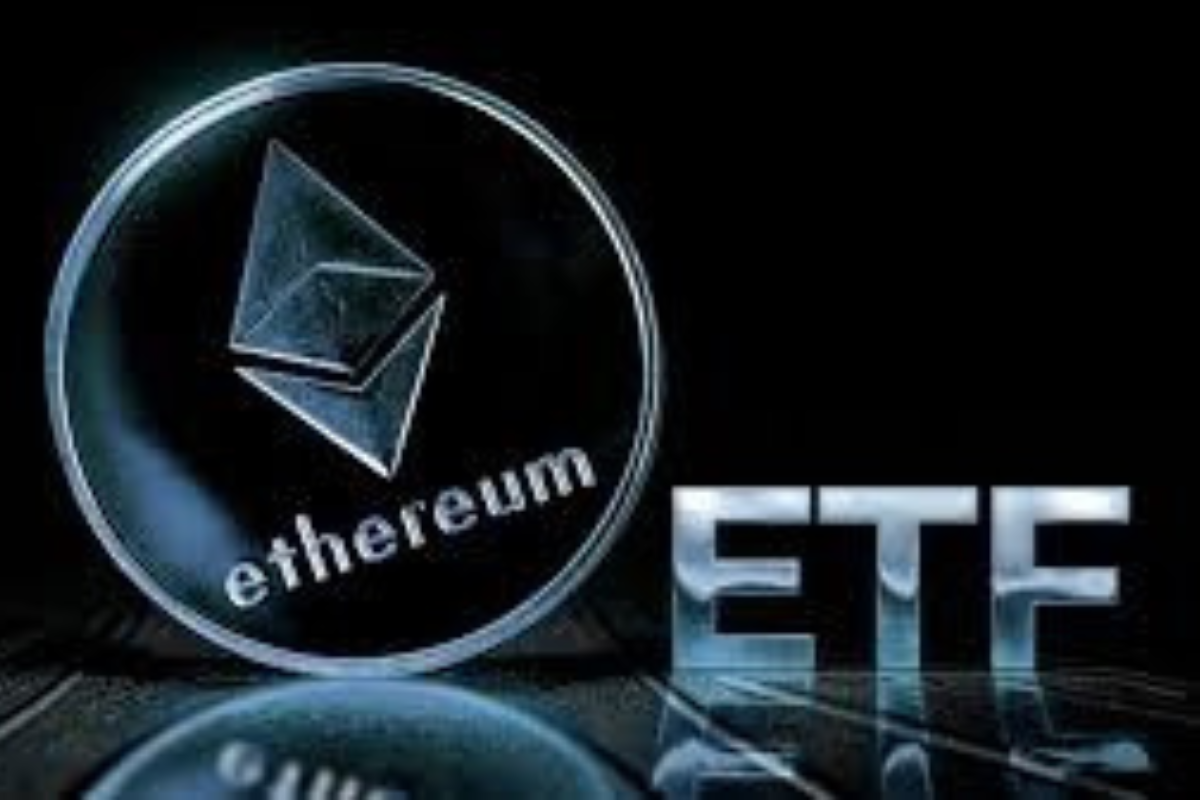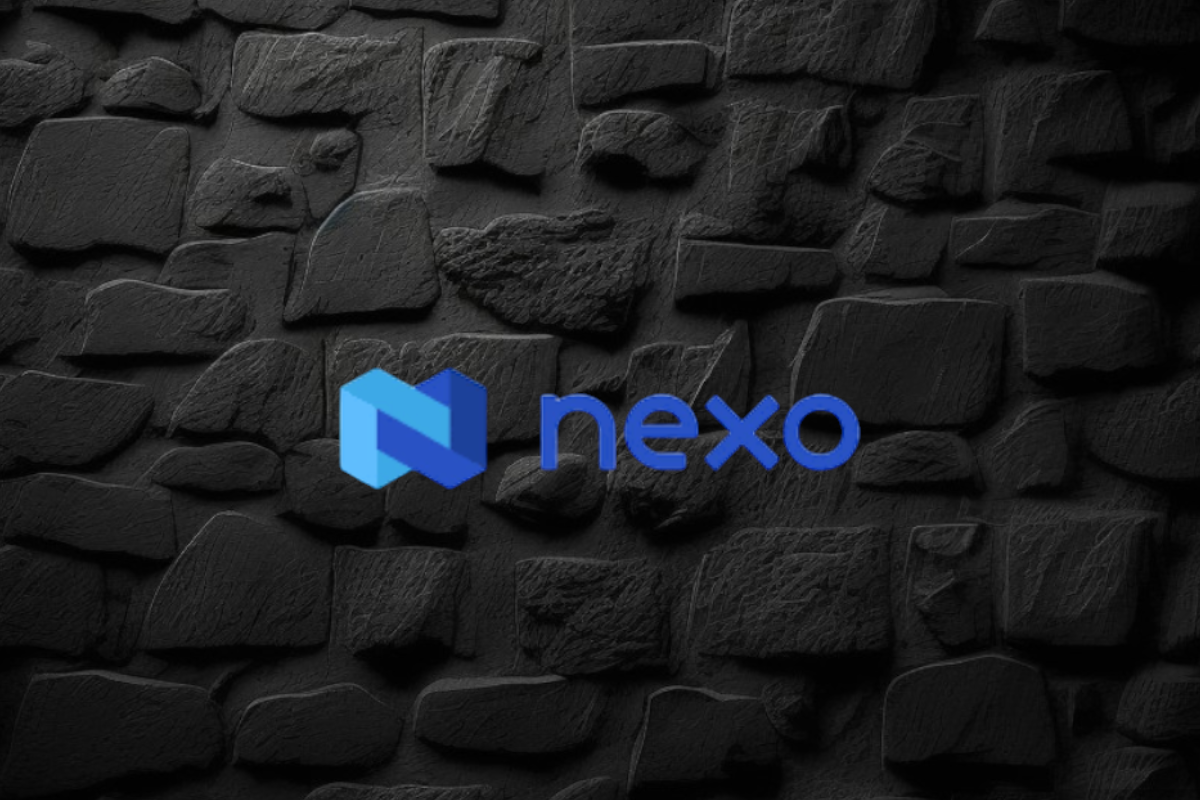Blockchain
Galaxy Announces Third Quarter 2023 Financial Results and October Update

Galaxy Digital Holdings Ltd. (TSX: GLXY) (the “Company” or “GDH Ltd.”) today released financial results for the three and nine months ended September 30, 2023, for both itself and Galaxy Digital Holdings LP (the “Partnership” or “GDH LP”). In this press release, a reference to “Galaxy”, “we”, “our” and similar words refer to GDH Ltd., its subsidiaries and affiliates including GDH LP, or any one of them, as the context requires.
Preliminary Financial Highlights, through October 31, 20231
Since the end of the third quarter, digital asset prices materially changed and our business has benefited from heightened market volatility and increased trading volumes. Galaxy’s income before tax was approximately $124 million in the month of October, driven primarily by our market positioning and the appreciation of digital asset prices. Equity capital increased to approximately $1.6 billion over the same period.
Corporate Updates
US Listing and Reorganization: Galaxy continues to work on completing its proposed reorganization and domestication to become a Delaware-incorporated company and subsequently list on the Nasdaq, upon completion of ongoing SEC review and subject to stock exchange, shareholder and applicable regulatory approvals of such transactions.
Share Buyback Program: As announced on May 26, 2023, the Company commenced a new normal course issuer bid on May 31, 2023, and is eligible to purchase up to 10 million ordinary shares. For the period between July 1, 2023 and October 31, 2023, Galaxy repurchased approximately 1.2 million shares at an average price of CAD $4.69.
|
Select Financial Metrics |
Q3 2023 |
Q2 2023 |
% Change |
|
Equity Capital |
$1,466M |
$1,542M |
(5 %) |
|
Liquidity |
$749M |
$696M |
8 % |
|
Cash & Net Stablecoins3 |
$395M |
$468M |
(16 %) |
|
Net Digital Assets4 |
$354M |
$228M |
56 % |
|
Net Income (loss) |
($94M) |
($46M) |
(104 %) |
|
Note: Throughout this document, totals may not sum due to rounding. Quarter-over-quarter percentage change calculations are based on actual results. |
Galaxy Global Markets
Galaxy Global Markets (“GGM”) offers institutional-grade expertise and access to a broad range of digital asset products, including digital asset spot and derivatives trading, structured products, financing, as well as capital markets and M&A advisory services for corporate clients. GGM operates in two discrete business units – Trading and Investment Banking.
Trading
Trading reported counterparty trading revenue of $14 million, down $6 million quarter-over-quarter (“QoQ”). The decrease was primarily due to record low volatility and market positioning. Subsequent to quarter-end, our counterparty trading desk’s market positioning benefited from the favorable asset price movements and significant uptick in volatility and has generated $24 million of revenue in October. Despite the decline in revenue QoQ, counterparty trading volumes increased 70% versus the second quarter and our average loan book size expanded to $553 million.
|
Key Performance Indicators |
Q3 2023 |
Q2 2023 |
% Change |
|
Loan Book Size (Average) |
$553M |
$507M |
9 % |
|
Counterparty Loan Originations |
$117M |
$115M |
2 % |
|
Counterparty Trading Volumes QoQ Change |
70 % |
(29 %) |
N.M. |
|
Total Trading Counterparties |
1,028 |
999 |
3 % |
|
Active Trading Counterparties |
284 |
291 |
(2 %) |
Investment Banking
Investment Banking successfully closed two deals in the quarter, serving as advisor to Gamercraft on its latest investment round and serving as the exclusive financial advisor to Securitize in its acquisition of Onramp Invest, both of which we expect to realize as revenue at a later date. Notably, the team was also selected to represent Prime Trust in Nevada Receivership as part of an ongoing restructuring mandate. Galaxy continues to execute against a pipeline of mandates representing $2.2 billion in potential deal value.
|
Key Performance Indicators |
Q3 2023 |
Q2 2023 |
% Change |
|
Deals Closed |
2 |
1 |
100 % |
|
Pipeline |
24 |
23 |
4 % |
|
Deal Value of Pipeline |
$2.2B |
$1.0B |
120 % |
_____
KEY TERMS
Counterparty Trading Revenue: revenue from counterparty-facing activities from our Derivatives, Credit, Over-the-Counter Trading, and Quantitative Trading businesses, net of associated funding charges.
Loan Book Size (Average): average market value of all open loans, un-funded arrangements to finance delayed trading/settlement (for example over weekends), and uncommitted credit facilities in the quarter.
Counterparty Loan Originations: market values of all loans, credit facility draws, and credit facilities originated to external counterparties in the quarter. Does not include rolled loans as a new origination; rolled loans can be generally defined as loans where the maturity was extended but no other material terms were changed.
Active Trading Counterparties: counterparties with whom we have traded within the past 12 months and who are still onboarded with Galaxy’s trading business.
Pipeline: the number of open engagements and transactions the Investment Banking team is in market with.
Deal Value of Pipeline: the theoretical aggregate deal value associated with the Investment Banking pipeline.
Galaxy Asset Management
Galaxy Asset Management (“GAM”) provides investors access to the digital asset ecosystem via a diverse suite of institutional-grade investment vehicles that span passive, active, and venture strategies.
GAM management and performance fees were $4.7 million in the quarter, representing an 11% increase QoQ. GAM reported preliminary assets under management of approximately $3.9 billion as of September 30, 2023, a 58% increase QoQ. The increase in AUM was primarily driven by net inflows from new actively managed client mandates that came in at the end of the quarter. AUM consisted of $768 million in passive strategies, $1,704 million in active strategies and $1,456 million in venture strategies.
|
Key Performance Indicators |
Q3 2023 |
Q2 2023 |
% Change |
|
Management and Performance Fees |
$4.7M |
$4.2M |
11 % |
|
Total AUM |
$3,927M |
$2,489M |
58 % |
|
Passive AUM |
$768M |
$958M |
(20 %) |
|
Active AUM |
$1,704M |
$103M |
1,548 % |
|
Venture AUM |
$1,456M |
$1,428M |
2 % |
|
Number of Portfolio Company Investments1 |
223 |
217 |
3 % |
|
(1) Includes investments held directly on the Partnerships’ balance sheet and indirectly through the Galaxy sponsored funds. |
_____
KEY TERMS
Assets Under Management: all figures are unaudited. AUM is inclusive of sub-advised funds, committed capital closed-end vehicles, seed investments by affiliates, affiliated and unaffiliated separately managed accounts, and fund of fund products. Changes in AUM are generally the result of performance, contributions, withdrawals, and acquisitions.
- Preliminary AUM associated with GVH Multi-Strategy FOF LP is based on management’s most recent estimate.
- AUM for committed capital closed-end vehicles that have completed their investment period is reported as NAV (Net Asset Value) plus unfunded commitment.
- AUM for quarterly close vehicles is reported as of the most recent quarter available for the applicable period.
- AUM for affiliated separately managed accounts is reported as NAV as of the most recently available estimate for the applicable period.
Passive Strategies: single- and multi-asset private funds, as well as a suite of regulated spot digital asset exchange-traded funds offered through partnerships with asset managers globally.
Active Strategies: Galaxy’s Liquid Alpha strategy and the management of certain bespoke mandates.
Venture Strategies: organized around two investment themes: Interactive Ventures and Crypto Ventures. Galaxy Interactive is GAM’s sector-focused venture arm, managing client capital across three funds. GAM’s Crypto Ventures sleeve invests client capital across two global, multi-manager venture funds and manages a subset of Galaxy’s balance sheet venture investments.
Galaxy Digital Infrastructure Solutions
Galaxy Digital Infrastructure Solutions (“GDIS“) consists of proprietary and hosted bitcoin mining services, GK8 self-custody technology solutions, and validator services.
Mining
Mining revenue was $14.3 million in the quarter relative to power purchase agreement and external hosting expenses, net of curtailment credits, of ($2.2 million). We reached 3.9 exahash per second of hashrate under management across our proprietary and hosted footprint, as we continued to scale our Helios facility in West Texas. Our effective power management strategy led to a negative average marginal cost to mine in the quarter. We expect our average marginal cost to mine to increase in the fourth quarter relative to the third and second quarters in anticipation of fewer opportunities to economically curtail our mining operations and a higher network hashrate.
|
Key Performance Indicators |
Q3 2023 |
Q2 2023 |
% Change |
|
Mining Revenue |
$14.3M |
$15.4M |
(7 %) |
|
Proprietary Mining Revenue |
$8.8M |
$8.6M |
3 % |
|
Hosted and Other Mining Revenue1 |
$5.5M |
$6.8M |
(19 %) |
|
Total Hashrate Under Management |
3.9 EH/s |
3.7 EH/s |
7 % |
|
Proprietary Mining Hashrate |
1.8 EH/s |
1.7 EH/s |
10 % |
|
Hosted Mining Hashrate |
2.1 EH/s |
2.0 EH/s |
4 % |
|
Number of Proprietary BTC Mined |
309 |
307 |
1 % |
|
Average Marginal Cost to Mine |
< $0 |
$9K -$10K |
N.M. |
|
(1) Includes revenue from hosting clients, leasing agreements and other mining related activities. |
Self-Custody and Validator Solutions
Self-Custody and Validator Solutions are focus areas in our continued commitment to the future of decentralized networks. This includes supporting the integrity of protocols and ecosystem projects by operating validator nodes to secure blockchains, and by offering self-custody technology solutions to institutions through GK8.
|
Key Performance Indicators |
Q3 2023 |
Q2 2023 |
% Change |
|
GK8 Total Client Count |
16 |
15 |
7 % |
_____
KEY TERMS
Hashrate Under Management: the total combined hashrate of active proprietary and hosted mining capacity managed by Galaxy.
Proprietary Mining Hashrate: the hashrate attributed to Galaxy owned and operated mining rigs.
Hosted Mining Hashrate: the hashrate attributed to third-party machines operated by Galaxy for a client.
Number of Proprietary BTC Mined: the total amount of bitcoin mined from proprietary mining operations.
Average Marginal Cost to Mine: the marginal cost of production for each bitcoin generated during the period. The calculation excludes depreciation, mark-to-market on power contracts, and corporate overhead.
GK8 Total Client Count: the total number of clients contracted to use GK8’s technology solutions.
GDH Ltd.’s Financial Highlights
As the only significant asset of GDH Ltd. is its minority interest in GDH LP, its results are driven by the results of GDH LP. GDH Ltd. accounts for its investment in this associate (GDH LP) using the equity method. The investment, initially recorded at cost, is increased or decreased to recognize GDH Ltd.’s share of the earnings and losses of GDH LP. During the three months ended September 30, 2023, an impairment assessment was required under International Financial Reporting Standards and GDH Ltd.’s minority interest in GDH LP was marked down based on the TSX quarter-end closing share price. An impairment expense of $44.9 million was recognized during the three months ended September 30, 2023. During the first and second quarters of 2023, the Company had recognized reversal of impairment of $128.1 million resulting in net impairment reversal of $83.2 million for the nine months ended September 30, 2023.
The net comprehensive income (loss) of GDH Ltd. was ($68.8 million) and $83.2 million for the three and nine months ended September 30, 2023, respectively.
Earnings Conference Call
An investor conference call will be held today, November 9, 2023, at 8:30 AM Eastern Time. A live webcast with the ability to ask questions will be available at: https://investor.galaxy.com/. The conference call can also be accessed by investors in the United States or Canada by dialing 1-844-746-0741, or 1-412-317-5107 (outside the U.S. and Canada). A replay of the webcast will be available and can be accessed in the same manner as the live webcast on the Company’s Investor Relations website. Through December 9, 2023, the recording will also be available by dialing 1-844-512-2921, or 1-412-317-6671 (outside the U.S. and Canada) and using the passcode: 10183468.
Blockchain
Glidelogic Corp. Announces Revolutionary AI-Generated Content Copyright Protection Solution
Blockchain
Ethereum ETFs Aren’t Blockchain But Is A Revolutionary Tech: Top 6 Amazing Reasons To Invest In Them

The financial landscape is rapidly evolving, with the integration of blockchain technology and cryptocurrencies becoming more prominent. Among these, Ethereum ETFs (Exchange-Traded Funds) have emerged as a significant investment vehicle, offering exposure to the Ethereum blockchain’s native cryptocurrency, Ether (ETH), without requiring direct ownership. However, it’s crucial to understand that Ethereum ETFs are distinct from the blockchain itself and serve different purposes in the investment world.
Understanding Ethereum and ETFs
Ethereum: A decentralized platform that enables the creation and execution of smart contracts and decentralized applications (dApps). It operates using its cryptocurrency, Ether (ETH), which fuels the network.
ETF (Exchange-Traded Fund): A type of investment fund that holds a collection of assets and is traded on stock exchanges. ETFs can include various asset classes, such as stocks, commodities, or bonds.
Ethereum ETFs: The Intersection of Traditional Finance and Cryptocurrency
An Ethereum ETF provides a way for investors to gain exposure to the price movements of Ether without directly purchasing the cryptocurrency. This is achieved through an ETF structure, where the fund holds assets linked to the value of Ether, and investors can buy shares of the ETF on traditional stock exchanges.
Key Features of Ethereum ETFs:
- Indirect Exposure: Investors gain exposure to Ether’s price changes without needing to manage or store the cryptocurrency themselves.
- Regulatory Compliance: Unlike the relatively unregulated cryptocurrency market, ETFs operate under the oversight of financial regulators, offering a layer of investor protection.
- Accessibility: Ethereum ETFs are available through traditional brokerage platforms, making them accessible to a broader range of investors.
Why Invest in an Ethereum ETF?
- Diversification: Including an Ethereum ETF in a portfolio can provide exposure to the cryptocurrency market, potentially enhancing diversification beyond traditional assets.
- Convenience and Familiarity: ETFs are a familiar investment product, simplifying the process of investing in cryptocurrencies.
- Professional Management: ETF managers handle the investment decisions, including the buying and selling of assets, which can be advantageous for those less familiar with the cryptocurrency space.
- Regulatory Oversight: ETFs are subject to regulatory scrutiny, potentially offering more safety and transparency compared to direct cryptocurrency investments.
- Potential for Growth: As the cryptocurrency market grows, ETFs linked to assets like Ether may benefit from rising prices.
Key Differences Between Ethereum and Ethereum ETFs
While both are related to the Ethereum blockchain, Ethereum itself and Ethereum ETFs represent different forms of investment:
- Ethereum (ETH):
- Direct ownership of the cryptocurrency.
- Full exposure to Ethereum’s features, including staking and network participation.
- Traded on cryptocurrency exchanges.
- Highly volatile and largely unregulated.
- Ethereum ETF:
- Indirect exposure through shares representing Ether’s value.
- Traded on traditional stock exchanges under regulatory oversight.
- Offers a more stable and familiar investment structure.
- Typically lower volatility compared to direct cryptocurrency ownership.
Future Considerations for Ethereum ETFs
The approval and launch of Ethereum ETFs mark a significant milestone in bringing cryptocurrencies closer to mainstream finance. They offer a convenient and regulated means for investors to gain exposure to the growing digital assets market. However, they also come with limitations, such as not allowing direct participation in the Ethereum ecosystem’s innovations, like dApps and smart contracts.
As the market evolves, we may see more sophisticated financial products that better capture the full potential of the Ethereum ecosystem. For now, Ethereum ETFs provide a balanced option for those interested in cryptocurrency exposure within the framework of traditional finance.
In conclusion, while Ethereum ETFs offer a gateway into the world of digital assets, they should be viewed as complementary to, rather than a replacement for, direct investment in the underlying blockchain technologies. Investors should carefully consider their investment goals, risk tolerance, and the unique attributes of both Ethereum and Ethereum ETFs when making investment decisions.
Source: blockchainmagazine.net
The post Ethereum ETFs Aren’t Blockchain But Is A Revolutionary Tech: Top 6 Amazing Reasons To Invest In Them appeared first on HIPTHER Alerts.
Blockchain
Nexo Reaffirms Commitment to Data Protection with SOC 3 and SOC 2 Compliance

Nexo, a leading institution in the digital assets industry, has reinforced its commitment to data security by renewing its SOC 2 Type 2 audit and attaining a new SOC 3 Type 2 assessment without any exceptions. This rigorous audit process, conducted by A-LIGN, a respected independent auditor specializing in security compliance, confirms Nexo’s adherence to stringent Trust Service Criteria for Security and Confidentiality.
Key Achievements and Certifications
- SOC 2 and SOC 3 Compliance:
- SOC 2 Type 2: This audit evaluates and reports on the effectiveness of an organization’s controls over data security, particularly focusing on the confidentiality, integrity, and availability of systems and data.
- SOC 3 Type 2: This public-facing report provides a summary of SOC 2 findings, offering assurance to customers and stakeholders about the robustness of Nexo’s data security practices.
- Additional Trust Service Criteria:
- Nexo expanded the scope of these audits to include Confidentiality, showcasing a deep commitment to protecting user data.
- Security Certifications:
- The company also adheres to the CCSS Level 3 Cryptocurrency Security Standard, and holds ISO 27001, ISO 27017, and ISO 27018 certifications, awarded by RINA. These certifications are benchmarks for security management and data privacy.
- CSA STAR Level 1 Certification:
- This certification demonstrates Nexo’s adherence to best practices in cloud security, further solidifying its position as a trusted partner in the digital assets sector.
Impact on Customers and Industry Standards
Nexo’s rigorous approach to data protection and compliance sets a high standard in the digital assets industry. By achieving these certifications, Nexo provides its over 7 million users across more than 200 jurisdictions with confidence in the security of their data. These achievements not only emphasize the company’s dedication to maintaining top-tier security standards but also highlight its proactive stance in fostering trust and transparency in digital asset management.
Nexo’s Broader Mission
As a premier institution for digital assets, Nexo offers a comprehensive suite of services, including advanced trading solutions, liquidity aggregation, and tax-efficient credit lines backed by digital assets. Since its inception, the company has processed over $130 billion, showcasing its significant impact and reliability in the global market.
In summary, Nexo’s successful completion of SOC 2 and SOC 3 audits, along with its comprehensive suite of certifications, underscores its commitment to the highest standards of data security and operational integrity. This dedication positions Nexo as a leader in the digital assets space, offering unparalleled security and peace of mind to its users.
Source: blockchainreporter.net
The post Nexo Reaffirms Commitment to Data Protection with SOC 3 and SOC 2 Compliance appeared first on HIPTHER Alerts.
-

 Blockchain4 days ago
Blockchain4 days agoBinance Cleared to Invest Customer Assets in US Treasury Bills: What It Means for Crypto and Dollar Dominance
-

 Blockchain4 days ago
Blockchain4 days agoDeep Custodian Limited Obtains Hong Kong TCSP License, Authorized to Provide Compliant Crypto Asset Custody Services
-

 Blockchain Press Releases2 days ago
Blockchain Press Releases2 days agoBybit Web3 Livestream Explores Cultural Meme Coins and Other Trends
-

 Blockchain3 days ago
Blockchain3 days agoBlockchain Intelligence Group adds additional modules and launches its Certified Cryptocurrency Investigator – Advanced Series
-

 Blockchain Press Releases2 days ago
Blockchain Press Releases2 days agoBybit Surges to Second Place in Derivatives Market, Solidifying Position as Global Crypto Trading Leader
-

 Blockchain3 days ago
Blockchain3 days agoBitAngels Network Hosts Blockchain Pitch Competition in Nashville
-

 Blockchain4 days ago
Blockchain4 days agoCoinW Continues Expedition Trek And Double Down On Presence At ETH-Native Events
-

 Blockchain2 days ago
Blockchain2 days agoKevin O ‘Leary Addresses Crypto Investing, Ethereum ETFs, and SEC Chair in Recent Interview











































